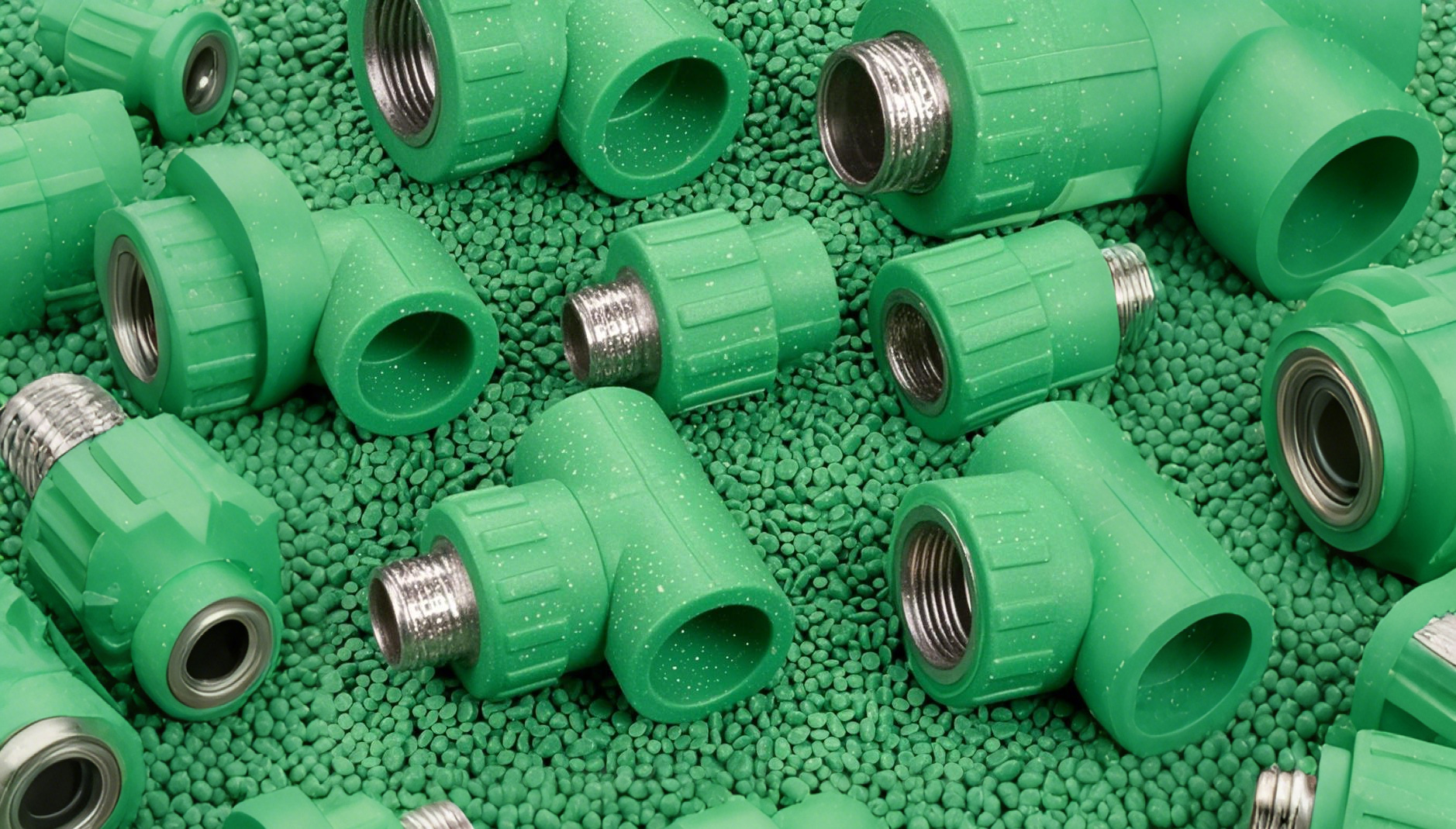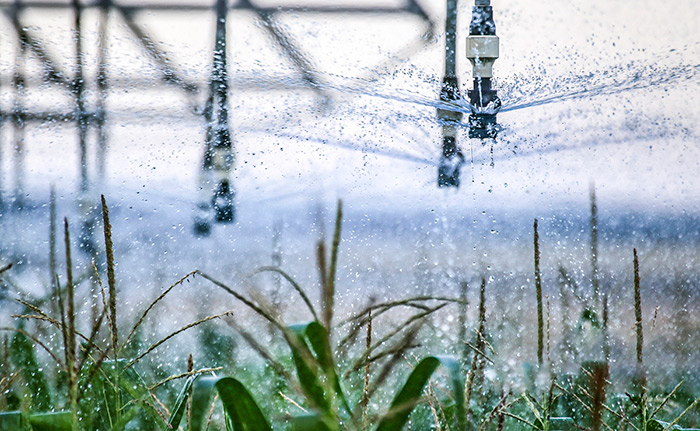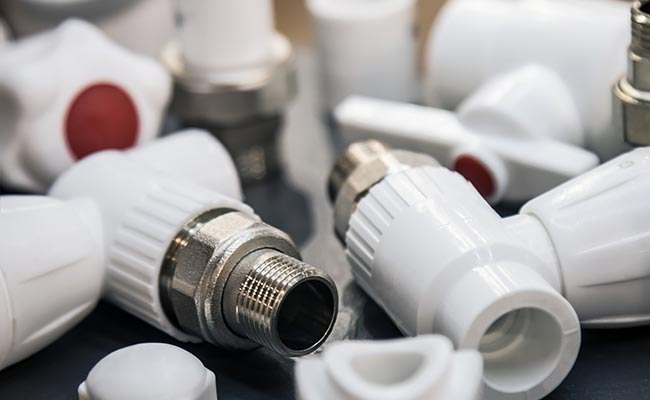
A PPR Reducing Elbow makes plumbing easier by connecting pipes with different diameters. It ensures water flows smoothly without interruptions. This fitting is essential for modern plumbing projects in homes, offices, and factories. Professionals rely on it to create efficient systems that last for years.
Key Takeaways
- PPR reducing elbows join pipes of different sizes. They help water flow smoothly and cut down on extra parts.
- These parts are strong and don’t rust, so they last a long time in homes and businesses.
- They are light, easy to install, and great for DIY jobs. This also makes work easier for plumbers.
What Is a PPR Reducing Elbow?
Definition and Purpose
A PPR reducing elbow is a specialized plumbing fitting designed to connect pipes of different diameters at an angle. It ensures a smooth transition between pipes while maintaining efficient water flow. This fitting combines two essential functions: changing the direction of the pipeline and accommodating varying pipe sizes. By doing so, it reduces the need for additional fittings, simplifying plumbing installations.
These fittings are widely used in residential, commercial, and industrial plumbing systems. Their durability and corrosion resistance make them a reliable choice for long-term use. Whether it’s a small home project or a large-scale industrial setup, a PPR reducing elbow plays a crucial role in ensuring the system operates efficiently.
How It Works in Plumbing Systems
The PPR reducing elbow works by creating a secure connection between two pipes of different diameters. Its angled design allows for a change in direction, typically at 90 degrees, while maintaining a consistent flow of water or other fluids. This design minimizes turbulence and pressure loss, ensuring the system operates smoothly.
For example, in a residential plumbing system, a PPR reducing elbow might connect a larger main water supply pipe to a smaller pipe leading to a faucet. This ensures water flows efficiently without leaks or interruptions. The fitting’s precision engineering and tight tolerances provide a leak-free connection, reducing the risk of maintenance issues.
Our PPR valves and fittings are meticulously engineered to deliver reliable and efficient performance. With precise dimensions and tight tolerances, they ensure a secure and leak-free connection. This reduces the risk of costly repairs and maintenance. Their user-friendly design makes installation quick and hassle-free, saving time and effort for both professionals and DIY enthusiasts.
Common Materials and Standards
PPR reducing elbows are typically made from polypropylene random copolymer (PPR), a material known for its strength, durability, and resistance to corrosion. This material is also lightweight, making it easy to handle and install.
To ensure quality and performance, these fittings adhere to various industry standards and certifications. Some of the key standards include:
- ISO 15874 series
- EN 15874 series
- ASTM F2389
- DIN 8077/8078
- GB/T 18742 series
- NBR 15884
Additionally, PPR reducing elbows often meet certifications such as:
| Certification | Description |
|---|---|
| CE | Conformity to European standards |
| ROHS | Restriction of hazardous substances |
| ISO9001:2008 | Quality management systems |
| ISO14001:2004 | Environmental management systems |
These standards and certifications validate the quality and reliability of PPR reducing elbows, ensuring they meet the demands of modern plumbing systems.
Our PPR fittings undergo rigorous testing to meet these standards. They are designed to withstand high pressure, resist chemical exposure, and provide long-lasting performance. This makes them a cost-effective solution for any plumbing project.
Key Features and Benefits of PPR Reducing Elbows
Durability and Corrosion Resistance
PPR reducing elbows are built to last. Their construction from high-quality polypropylene random copolymer ensures exceptional durability. Unlike metal fittings, they resist rust and remain unaffected by moisture or chemicals. This makes them ideal for plumbing systems exposed to varying environmental conditions.
Tests have shown their ability to withstand extreme temperatures and pressure. For instance:
- High-temperature resistance tests, conducted under ISO 15874 and ASTM F2389 standards, confirmed their stability between 70°C and 110°C.
- Long-term hydrostatic pressure tests at 80°C and 1.6 MPa revealed less than 0.5% deformation after 1,000 hours.
These results highlight their strength and resistance to wear and tear. Whether used in residential or industrial systems, PPR reducing elbows maintain their shape and performance over time.
Tip: Choosing PPR reducing elbows over metal fittings can save you from dealing with rust-related issues, ensuring a longer-lasting plumbing system.
Lightweight Design and Easy Installation
One of the standout features of PPR reducing elbows is their lightweight design. This makes them easy to handle and transport, especially during large-scale installations. Unlike heavier metal fittings, they reduce the physical strain on plumbers and DIY enthusiasts alike.
Their user-friendly design simplifies the installation process. With precise dimensions and tight tolerances, these fittings ensure a secure and leak-free connection. This eliminates the need for complex tools or techniques, saving both time and effort.
For example, a homeowner installing a new faucet can easily connect pipes of different sizes using a PPR reducing elbow. The lightweight nature of the fitting makes the task manageable, even for someone with minimal plumbing experience.
Cost-Effectiveness and Longevity
PPR reducing elbows offer a cost-effective solution for plumbing projects. Their durability and resistance to corrosion mean fewer replacements and repairs over time. This translates to significant savings on maintenance costs.
Additionally, their ability to withstand high pressure and temperature changes ensures long-term reliability. Unlike PVC or metal fittings, PPR reducing elbows excel in high-pressure systems without cracking or degrading. This makes them a smart investment for both small-scale and large-scale plumbing systems.
By choosing PPR reducing elbows, homeowners and professionals can enjoy peace of mind knowing their plumbing system will perform efficiently for years.
Note: Our PPR valves and fittings are designed to provide long-lasting performance. Their corrosion-resistant properties and precise engineering make them a reliable choice for any plumbing project.
Applications and Comparisons
Common Uses in Plumbing Systems
PPR reducing elbows are a go-to choice for connecting pipes of different sizes in various plumbing setups. They are commonly found in residential systems, where they link main water supply lines to smaller pipes leading to faucets, showers, or appliances. In commercial buildings, these fittings help manage complex networks by connecting pipes of varying diameters while maintaining smooth water flow.
Industrial applications also benefit from their versatility. Factories and processing plants often require plumbing systems that handle different pipe sizes and directional changes. PPR reducing elbows simplify these installations, ensuring efficient flow without the need for multiple fittings. Their ability to withstand high pressure and temperature makes them ideal for such demanding environments.
Comparison with Standard Elbows and Other Fittings
Unlike standard elbows, which only connect pipes of the same size, PPR reducing elbows offer greater flexibility. They allow for seamless transitions between different pipe diameters, reducing the need for additional fittings like couplings or adapters. This not only simplifies the installation process but also minimizes the risk of leaks.
Other fittings, such as adapters, can connect pipes of varying sizes but lack the ability to change direction efficiently. PPR reducing elbows combine both functions, making them a superior choice for complex plumbing layouts. Their streamlined design saves time and material costs, offering a practical solution for modern plumbing systems.
Choosing PPR Reducing Elbows Over Alternatives
When selecting plumbing fittings, durability, efficiency, and ease of installation are key factors. PPR reducing elbows check all these boxes. Their corrosion-resistant material ensures long-term reliability, while their lightweight design makes them easy to handle. Unlike metal fittings, they don’t rust, which means fewer maintenance issues over time.
For anyone looking to simplify their plumbing projects, PPR reducing elbows stand out as a smart choice. They provide a secure connection, reduce the need for extra fittings, and ensure smooth water flow. Whether for a home renovation or a large-scale industrial project, these fittings deliver unmatched performance and value.
PPR reducing elbows simplify plumbing by connecting pipes of different sizes while ensuring smooth flow. Their durability, lightweight design, and cost-effectiveness make them a reliable choice for any project. These fittings enhance system efficiency and reduce maintenance needs. Whether for home or industrial use, they’re a smart investment for long-lasting performance.
FAQ
What makes PPR reducing elbows better than metal fittings?
PPR reducing elbows resist rust, last longer, and are easier to install. Their lightweight design saves time and effort during plumbing projects.
Can PPR reducing elbows handle high-pressure systems?
Yes, they’re engineered to withstand high pressure and temperature changes. Their durable material ensures reliable performance in demanding environments.
Are PPR reducing elbows suitable for DIY plumbing?
Absolutely! Their user-friendly design makes them perfect for DIY enthusiasts. They’re lightweight, easy to connect, and require minimal tools for installation.
Post time: May-20-2025




